- News
- Reviews
- Bikes
- Components
- Bar tape & grips
- Bottom brackets
- Brake & gear cables
- Brake & STI levers
- Brake pads & spares
- Brakes
- Cassettes & freewheels
- Chains
- Chainsets & chainrings
- Derailleurs - front
- Derailleurs - rear
- Forks
- Gear levers & shifters
- Groupsets
- Handlebars & extensions
- Headsets
- Hubs
- Inner tubes
- Pedals
- Quick releases & skewers
- Saddles
- Seatposts
- Stems
- Wheels
- Tyres
- Tubeless valves
- Accessories
- Accessories - misc
- Computer mounts
- Bags
- Bar ends
- Bike bags & cases
- Bottle cages
- Bottles
- Cameras
- Car racks
- Child seats
- Computers
- Glasses
- GPS units
- Helmets
- Lights - front
- Lights - rear
- Lights - sets
- Locks
- Mirrors
- Mudguards
- Racks
- Pumps & CO2 inflators
- Puncture kits
- Reflectives
- Smart watches
- Stands and racks
- Trailers
- Clothing
- Health, fitness and nutrition
- Tools and workshop
- Miscellaneous
- Buyers Guides
- Features
- Forum
- Recommends
- Podcast
review
 2022 Vielo V+1 Strato - riding 1.jpg
2022 Vielo V+1 Strato - riding 1.jpg£4,599.00
VERDICT:
Not the lightest build, but a very capable and confidence-inspiring performance gravel bike
50mm tyre clearance
Geometry gives balanced handling
Very comfortable rear end
A touch weighty in this build
Weight:
9,240g
Contact:
At road.cc every product is thoroughly tested for as long as it takes to get a proper insight into how well it works. Our reviewers are experienced cyclists that we trust to be objective. While we strive to ensure that opinions expressed are backed up by facts, reviews are by their nature an informed opinion, not a definitive verdict. We don't intentionally try to break anything (except locks) but we do try to look for weak points in any design. The overall score is not just an average of the other scores: it reflects both a product's function and value – with value determined by how a product compares with items of similar spec, quality, and price.
What the road.cc scores meanGood scores are more common than bad, because fortunately good products are more common than bad.
- Exceptional
- Excellent
- Very Good
- Good
- Quite good
- Average
- Not so good
- Poor
- Bad
- Appalling
The Gen 2 version of Vielo's V+1 Strato offers a fast and fun ride, and thanks to massive tyre clearance you aren't restricted in your choice of terrain. It's comfortable too, and has smooth clean looks even in the mechanical groupset builds. This model isn't the lightest though.
As much as I'd like to head off into the sunset and discover my local gravel tracks over days or weeks, the reality is that most of my gravel are short and fast – I'm nearly always chasing the clock, fitting things around the daily routine. That suited the V+1 though, because it likes to be ridden hard.
> Buy now: V+1 Strato from Vielo for £4,599
A lot of that comes down to stiffness, I reckon. The front end feels really tight, as does the area around the bottom backet shell where the wide seat and down tubes converge on the junction. There's plenty of material used for the chainstays too, and all of this together means the Vielo feels responsive and alert when you stamp on the pedals.
Blasting along flatter sections of gravel, or hitting the base of the climb and getting out of the saddle and hammering on, the V+1 really shines.
Carrying that speed through the bends or on the descents is easy too, as although the Vielo feels responsive and goads you into pushing hard, the geometry isn't as aggressive as some gravel bikes with this kind of persona.
A reasonably slack head angle and a wheelbase of over 1,050mm (size medium) means stability and predictability – but in a fun way!
On technical, craggy sections of trail the V+1 isn't the fastest handling gravel machine I've ridden at normal or high speeds. On sections of my test loop where you need precision and a quick front end to take them at speed, I had to really focus on the Vielo.
There wasn't quite the response to tiny body weight changes or squeezes of the brakes to adjust my line that I was hoping for, especially when the surface was loose.
So, while you might want to scrub off speed for the really tricky bits, everywhere else the Vielo flies; you can just let it run. You can make up time here as the V+1 feels so planted and sure-footed, even on that really small aggregate where the tyres skip around as if you're on marbles.
This neutrality is a godsend if you do head out for a long adventure, as there is less chance of fatigue building up in your arms and wrists from having to tame an excitable front end, and any surprises of unknown trails don't cause alarm.
The weight of this build (9.24kg on the road.cc scales of truth) does help create the V+1's secure feel on those rough and rutted surfaces. It's definitely not a bike you get bounced about on.
The trade-off is the heft can hamper climbing, although thankfully the wide spread of usable gears on the 1x system goes some way to offset the grammes.
For such a stiff bike, comfort isn't compromised thanks in a large part to the very slender, flattened seatstays which gently curve. Also, I was running just over 240mm of exposed seatpost, which brings its own degree of flex.
Neither of these detract from what the lower half of the frame is doing. You can still feel all of that power going through the rear wheel and the feedback from the tyres – they just take the edge off a little of the high-frequency buzzy stuff. In fact, feedback through the whole frame and fork is very impressive.
If you are the type of rider who wants to feel every single little piece of information about the relationship between the tyres and ground, you are going to love the V+1. You are properly involved with everything that is going on and, thanks to comfort from the rear and a little bit of relief from what is on the whole a very firm fork, the information you are receiving is uncluttered. Again, it allows you to push on at speed with no surprises.
> 19 of the best 2021 gravel bikes & adventure road bikes
On the majority of rides, you're going to cover some road before reaching your gravel playground, and that is no big issue on the V+1. Even with the standard 45mm tyres our build rolls along fine, and sticking another set of wheels on with some 35mm Panaracer GravelKing Plus tyres turned this into a capable 'all road' machine. It's ideal for a mixed terrain ride or commute.
Frame and fork
The V+1 is available in two different frame options: the Alto (880g) and the Strato here, which comes in at roughly 1,100g.
There is also a Race model, designed for use with the completely wireless SRAM eTap AXS groupsets, and a CHPT3-branded offering too.
Probably the biggest stand out thing about the V+1 to most is that it is 1x compatible only, something that is the case throughout Vielo's line up of bikes.
I found it to work well on Vielo's road bike, the R+1, and it makes even more sense here – as is demonstrated by the amount of brands that ship their gravel bikes with single chainrings.
The biggest benefit, Vielo reckons, is that with no need to provide clearance for a second chainring the down tube can be very wide; literally the same width as the bottom bracket shell, apparently giving a 32% increase in lateral stiffness over a 2x frame.
As always, it's difficult to test such numbers outside a laboratory, but as I've said, there are certainly no issues with how stiff the V+1 is out in the real world.
The single chainring also means Vielo doesn't have to drop the driveside chainstay for tyre clearance, so the chainstays mirror each other for size and shape while still allowing 50mm tyres – both for 700c and 650b wheels. Impressive.
The frame and fork will also accept customised mudguards created for Vielo by SKS. They're £55 and will accept 42mm tyres on 700c and 47mm on 650b.
Other neat touches include the stainless steel plates that protect the frame and fork from damage when removing and inserting the wheels, and the seatpost clamp that's fully integrated for a clean look.
The cables and hoses enter the frame via the down tube, which isn't quite as smooth-looking as with a lot of the latest high-end bikes, where they are diverted internally through the head tube. It's not a major issue though, especially if you are the one building the bike.
Mount-wise the V+1 gives you three positions for bottle cages: on the seat tube, underneath the down tube, and on top of the down tube. The latter enables some adjustment by giving you a third bolt; ideal if you are using frame bags.
For the bottom bracket the V+1 uses a press-fit unit, with a Token Ninja fitted as standard. The test period was very dry and dusty, so there was none of the usual grinding paste being flicked up from the tyres. That can lead to creaking. To be honest though the frame and fork here are exceptionally well made – good enough I would hope the tolerances in the bottom bracket shell are tight to resist the ingress of debris.
To finish things off Vielo also has its very own 12mm thru-axles, which give a classy edge to the bike.
Geometry and sizing
The V+1 is available in five sizes with effective top tube lengths of 505mm up to 605mm, which is a decent spread. The medium I was riding has a top tube of 555mm, head tube of 145mm and a seat tube of 480mm. The chainstays are 435mm of the overall 1057mm wheelbase.
Angle wise we are looking at 74.25° for the seat tube, and just 70.5° for the head. The BB drop is 70mm, while up front the fork length is 407.5mm with a rake of 48mm.
Stack and reach are 572mm and 393mm respectively, which is nothing out of the ordinary for this kind of bike, of this size.
Finishing kit
Across all four of the frame options there are twelve builds available, so choice certainly isn't limited and to be honest you want to be buying a complete machine – the Strato frameset is £4,599, which is the same price as this whole bike!
Our build is the entry-level and based around a GRX 600 set up; you get the STI units, rear mech and brake calipers mated to a Shimano 11-speed cassette.
Vielo supplies its own alloy crankset and chainring, and it's a good-looking piece of kit.
Our cassette is a wide-ranging option of 11-42t paired to a 42t chainring, though you can choose from 38t to 50t in two-tooth jumps. Extra chainrings, should you want a choice for differing rides, will set you back £85.
As Mike attested in his review of the GRX 600 groupset, the shifting and braking is spot on.
The chain happily skips up and down the cassette without issue regardless of how rough the terrain is, and the mech's clutch keeps chain slap and noise to a minimum.
Vielo has specced a 160mm disc rotor for the front and 140mm for the rear, which gives ample braking power even if you have the bike loaded up with a bit of kit.
I love the shape of GRX levers as their flat front section gives a secure platform for heavy braking, and your fingers don't slide about if it is rough; something that can happen when gravel bikes use road levers.
As for the rest of the build, the cockpit is from Zipp with an alloy stem and its XPLR handlebar. The bar has a slight flare at the drop, giving more stability on rough surfaces.
The seatpost is carbon fibre in a 30.9mm diameter, and the sandpaper-esque finish – to stop it slipping even on the roughest of trail sections – works really well.
The saddle is listed as a Fabric Scoop Shallow, although ours came with a Selle Italia model.
Wheel-wise the V+1 comes with DT Swiss GR 1800, a solid set of gravel wheels with alloy rims. I've used these wheels on countless bikes and never had any issue whatsoever. They aren't the lightest, but they are tough, and you certainly won't feel like wincing when they hit exposed rocks or potholes.
As standard the V+1 comes with 45mm WTS Riddlers. They have quite a light tread pattern that's mostly suited to drier conditions, but have a more aggressive tread on the shoulders to help with cornering in the loose. Overall, I like them. They feel pretty supple yet durable too, plus they are tubeless ready.
Value
This build is £4,599, while the range-topping SRAM Red eTap model rings the till at £9,699. That's a big chunk of cash regardless of build.
Lauf's Seigla Weekend Warrior comes with its leaf-spring fork, and is 1x only too. It costs £3,890 and also comes with a wireless SRAM Rival eTap AXS groupset. Jamie was certainly impressed in his test.
On the other hand, the Look Gravel RS gave an excellent ride quality when I reviewed it at the beginning of the year. With a Rival eTap groupset it costs £5,499 and comes with an entry-level set of Fulcrum wheels.
The equivalent V+1 build with the same DT Swiss wheels as ours comes in at £5,499, too.
Overall
This actual build of the V+1 carries a bit of extra weight given the price, but other than that I can't really fault the ride. Its stiffness makes it very efficient, plus it feels composed and its geometry is very confidence inspiring. It's a bike that allows you to ride very quickly on a whole range of terrains.
Verdict
Not the lightest build, but a very capable and confidence-inspiring performance gravel bike
road.cc test report
Make and model: Vielo V+1 Strato
Size tested: M, 55cm
About the bike
List the components used to build up the bike.
HANDLEBAR: Zipp XPLR alloy Bar width 40cm, 42cm, 44cm
STEM: Zipp Alloy Stem length 90, 100, 110mm
HEADSET: Vielo by Token
WHEELSET: DT Swiss GR1800 700c
TYRES: WTB Riddler 700 x 45c TCS
CRANKSET: Vielo Forged Alloy Crank with Vielo CNC Machined chain ring
BB: Token Ninja EVO
CHAIN: Shimano 11 speed
REAR MECH: Shimano GRX 600
CASSETTE: Shimano 11-42T
SHIFTERS: Shimano GRX 600
ROTORS: Shimano 160mm front, 140mm rear
SADDLE: Fabric Cromo Scoop shallow
SEAT POST: Vielo Carbon 30.9mm x 400mm
Tell us what the bike is for and who it's aimed at. What do the manufacturers say about it? How does that compare to your own feelings about the bike?
Vielo says, "Road or offroad the V+1 does it all.
The V+1 goes where you want to go - road, gravel, mud tracks, wherever. ISO 4210 certification means it is tough and up for the job. Clever design means you can use 700C or 650b wheels."
The V+1 is a very capable gravel racer with enough versatility that could see it pressed into all sorts of riding duties, on or away from the tarmac.
Where does this model sit in the range? Tell us briefly about the cheaper options and the more expensive options
This is the cheapest V+1 build in the line up, with more expensive options available with builds from Shimano, Campagnolo and SRAM.
Frame and fork
Overall rating for frame and fork
8/10
Tell us about the build quality and finish of the frame and fork?
Lots of attention to detail on this well made frame and fork, all finished off with a durable paint job.
Tell us about the materials used in the frame and fork?
FRAME: Full Carbon Fibre 1100g (semi internal hose routing)
FORK: Full Carbon Fibre (semi internal hose routing)
Tell us about the geometry of the frame and fork?
The geometry is typically gravel with a relaxed front end (compared to a road bike) to slow the handling for loose surfaces, and a longish wheelbase for added stability.
How was the bike in terms of height and reach? How did it compare to other bikes of the same stated size?
The stack and reach figures are fairly typical for a bike of this size and discipline.
Riding the bike
Was the bike comfortable to ride? Tell us how you felt about the ride quality.
For such a stiff bike the V+1 does well on comfort thanks to seatstays with some subtle give.
Did the bike feel stiff in the right places? Did any part of the bike feel too stiff or too flexible?
Being designed for a single chainring setup, the tubes entering the bottom bracket shell can be larger and improve stiffness.
How did the bike transfer power? Did it feel efficient?
Overall the bike does feel efficient due to its blend of stiffness and a wide spread of gears.
Was there any toe-clip overlap with the front wheel? If so was it a problem?
No.
How would you describe the steering? Was it lively neutral or unresponsive? Neutral.
Tell us some more about the handling. How did the bike feel overall? Did it do particular things well or badly?
The handling is steady and secure which helps you carry plenty of speed in most situations with confidence.
Which components had the most effect (good or bad) on the bike's comfort? would you recommend any changes?
Pressure changes to the large-volume 45mm tyres are the best way to control comfort levels.
Which components had the most effect (good or bad) on the bike's stiffness? would you recommend any changes?
Vielo's chainset feels very stiff when pushing hard on the pedals.
Which components had the most effect (good or bad) on the bike's efficiency? would you recommend any changes?
The 1x groupset works well for rides on various terrains. If you ride in a paticularly hilly or flat area there are plenty of chainring size options.
Rate the bike for efficiency of power transfer:
8/10
Rate the bike for acceleration:
7/10
Rate the bike for sprinting:
7/10
Rate the bike for high speed stability:
8/10
Rate the bike for cruising speed stability:
8/10
Rate the bike for low speed stability:
8/10
Rate the bike for flat cornering:
8/10
Rate the bike for cornering on descents:
8/10
Rate the bike for climbing:
7/10
The drivetrain
Rate the drivetrain for performance:
8/10
Rate the drivetrain for durability:
8/10
Rate the drivetrain for weight:
7/10
Tell us some more about the drivetrain. Anything you particularly did or didn't like? Any components which didn't work well together?
Shimano's GRX 600 is a very capable groupset, while the Vielo crankset and chainring are very well made.
Wheels and tyres
Rate the wheels for performance:
7/10
Rate the wheels for durability:
8/10
Rate the wheels for weight:
6/10
Rate the wheels for comfort:
7/10
Tell us some more about the wheels.Did they work well in the conditions you encountered? Would you change the wheels? If so what for?
A solid and dependable set of wheels, if not the lightest.
Rate the tyres for performance:
8/10
Rate the tyres for durability:
8/10
Rate the tyres for weight:
7/10
Rate the tyres for comfort:
8/10
Tell us some more about the tyres. Did they work well in the conditions you encountered? Would you change the tyres? If so what for?
I like the WTB tyres, especially in the test period's dry and dusty conditions. You'll need deeper tread for the winter months though.
Controls
Rate the controls for performance:
8/10
Rate the controls for durability:
8/10
Rate the controls for weight:
7/10
Rate the controls for comfort:
7/10
Tell us some more about the controls. Any particularly good or bad components? How would the controls work for larger or smaller riders?
It's a good mix of kit chosen for the build, and I especially like the flared, shallow drop of the Zipp handlebar.
Your summary
Did you enjoy riding the bike? Yes
Would you consider buying the bike? Yes
Would you recommend the bike to a friend? Yes
How does the price compare to that of similar bikes in the market, including ones recently tested on road.cc?
The Lauf mentioned in the review really impressed Jamie, and it's a fair bit cheaper plus comes with a wireless Rival eTap groupset. Look's bikes are normally found at the upper price points and the 765 Gravel RS is no exception. A Rival eTap build is the same price as the V+1 with the same groupset.
Rate the bike overall for performance:
8/10
Rate the bike overall for value:
5/10
Use this box to explain your overall score
The weight of this build does make itself known on the steepest of climbs, but other than that the Vielo V+1 is a very capable and comfortable gravel bike, with an impressive blend of stiffness and comfort.
About the tester
Age: 42
I usually ride: This month's test bike My best bike is: B'Twin Ultra CF draped in the latest bling test components
I've been riding for: Over 20 years I ride: Every day I would class myself as: Expert
I regularly do the following types of riding: time trialling, commuting, club rides, sportives, fixed/singlespeed,
Since writing his first bike review for road.cc back in early 2009 senior product reviewer Stu has tested more than a thousand pieces of kit, and hundreds of bikes.
With an HND in mechanical engineering and previous roles as a CNC programmer/machinist, draughtsman and development engineer (working in new product design) Stu understands what it takes to bring a product to market. A mix of that knowledge combined with his love of road and gravel cycling puts him in the ideal position to put the latest kit through its paces.
He first made the switch to road cycling in 1999, primarily for fitness, but it didn’t take long for his competitive side to take over which led to around ten years as a time triallist and some pretty decent results. These days though riding is more about escapism, keeping the weight off and just enjoying the fact that he gets to ride the latest technology as part of his day job.
Latest Comments
- notwelshyet 1 sec ago
Absolutely - I have wide feet and lake are the best fit for me... highly recommend them - over bonts that it two pairs for me to realise weren't...
- ktache 8 min 24 sec ago
I seem to recall saint Chris being more on recent BBC road cycling coverage rather than less.
- Rendel Harris 28 min 26 sec ago
So either it has to have the characteristics of a pogo stick or, more likely, that's a typo for "bunch sprint", which is equally nonsensical...
- chrisonabike 1 hour 20 min ago
I never heard of anyone having their leg sliced off / unexpectedly wiping out using a spoon brake, but discs...
- chrisonabike 1 hour 21 min ago
Meanwhile, in the Netherlands... (cycling to hospital, s''Hertogenbosch, Utrecht. Cycling to hospital and cycle parking, Assen)....
- Rendel Harris 1 hour 47 min ago
Sorry to say but your current trainer isn't going to be much use for online training in the way you describe, your virtual trainer will rely on not...
- andystow 2 hours 37 min ago
🎵 Sunshine on my shoulders makes me happy, sunshine in my eyes can make me crash. 🎵
- Jack Sexty 3 hours 2 min ago
The main featured link goes to the actual product - unfortunately the auto-generated widget is pulling in links to the old product right now, but...
- mike the bike 3 hours 33 min ago
Me too. And, somewhere in the shrubbery, there lurks a pheasant who achieved high office in said RCUK.

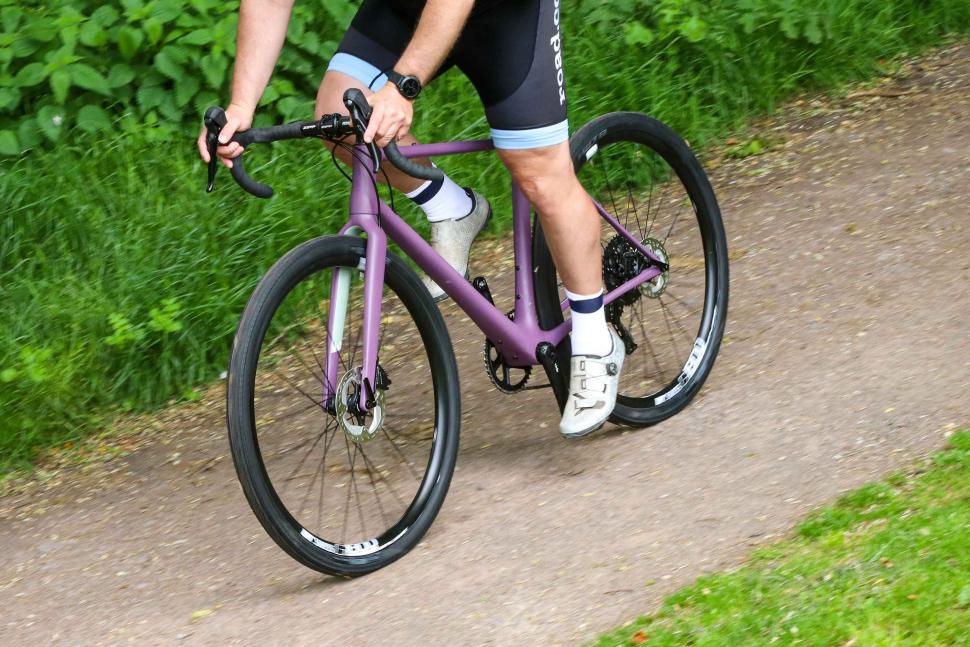







































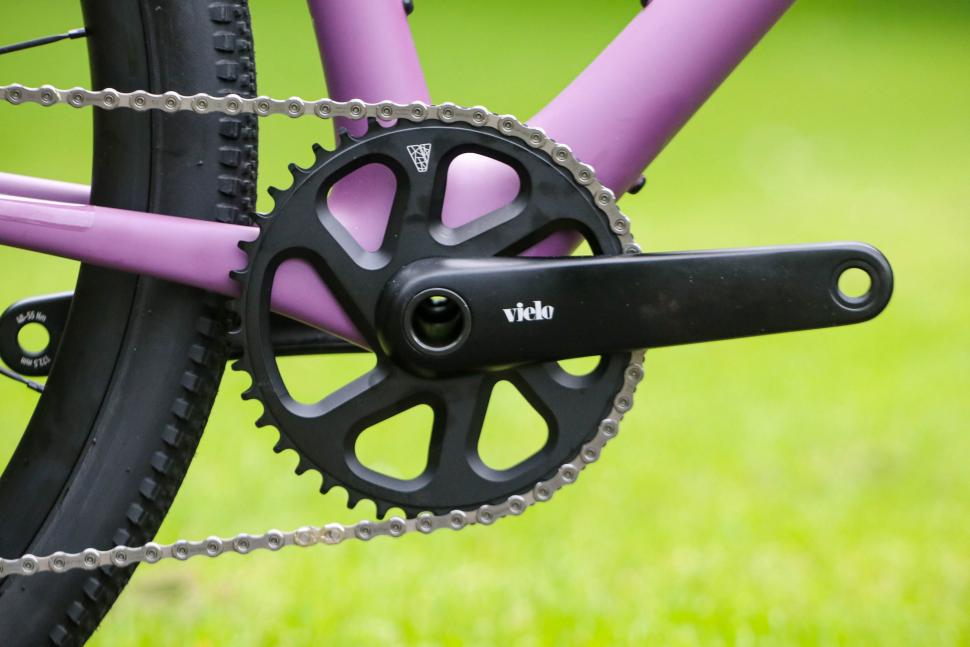

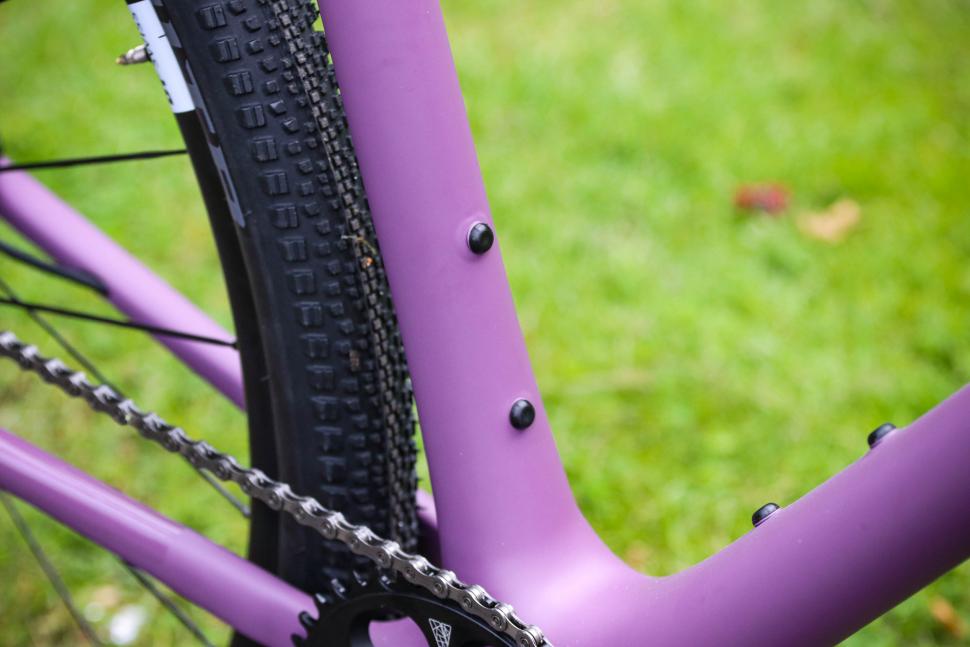
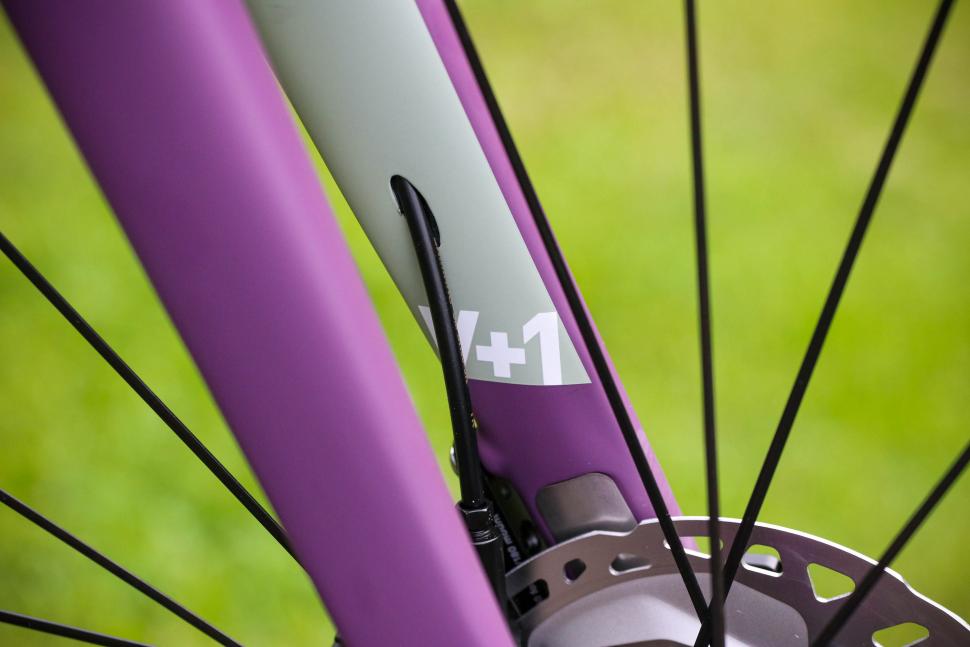










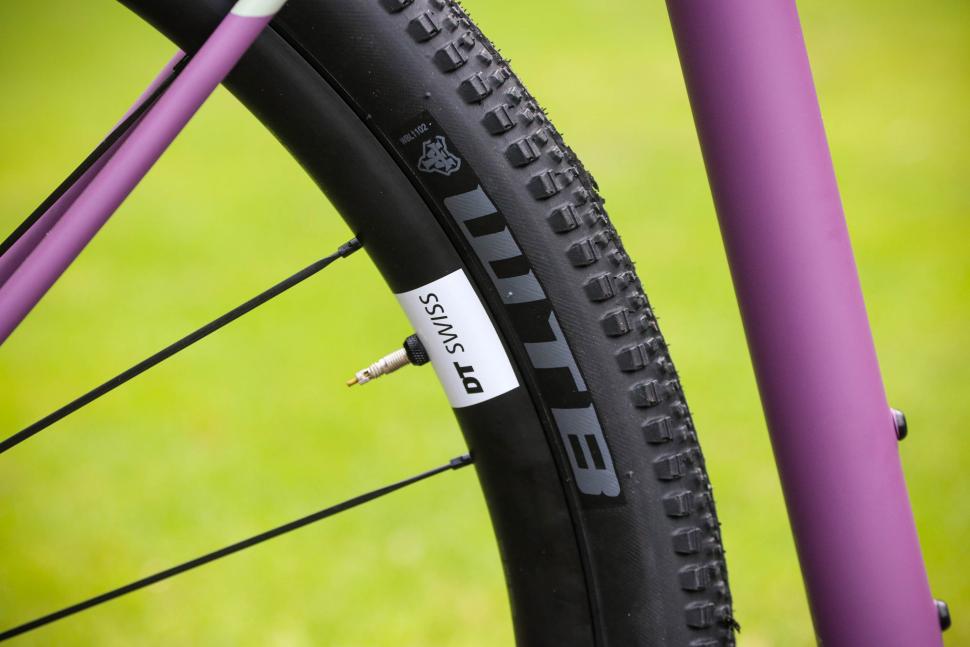


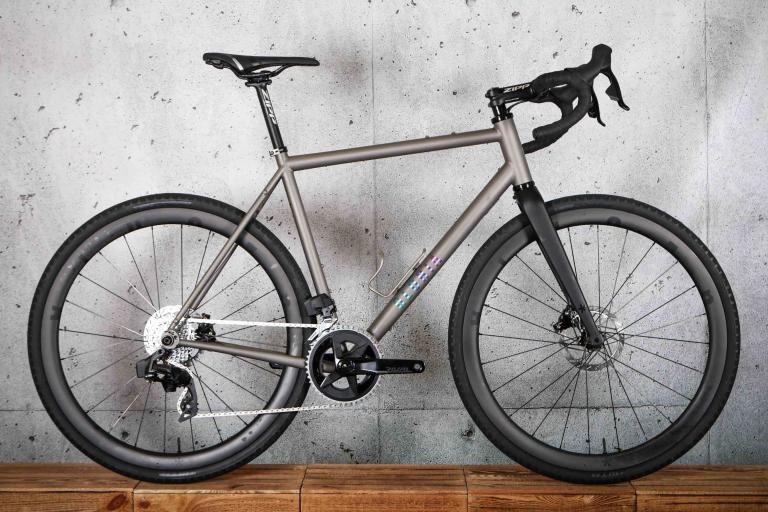
Add new comment
3 comments
Stu,
I am really torn between the R+1 and V+1 in SRam rival builds in the lighter alto framest. I am 60 this year and treating myself recognising I am paying a bit of a premium. It looks like you are one of the few who has ridden both. Being London based my use case is 90% road and some gravel lite, forestry tracks kind of thing. It will be my bike to take away to the Alps etc. The V1 is probably overkill but I do like it in the race version and have a set of HUNT 1300g wheels I can use for alpine climbs. What would you recommend? Is there much difference between them ? Fwiw I have a Scott addict SC currently set up pretty aggressively.
Hi bobinski,
Personally I'd go for the R+1 if the majority of your riding is 90% road, as the faster handling makes it more fun and involving on the tarmac. If the gravel you are riding is hard-packed and not too technical then the ability to fit the R+1 with 32mm tyres should cover those bases too.
Although, should you want to get more involved with gravel riding then the V+1 would make the better option, and it's no slouch on the road with slick tyres fitted. If you are a fan of descending though you might find the steering a little subdued for somewhere like the Alps.
Hope that helps.
Stu
Seems like Italian prices without the Italian pedigree. You can get a Reilly Gradient or Gradient T47 or Orro Terra C or Enigma Escape in similar specs all for significantly less cash.